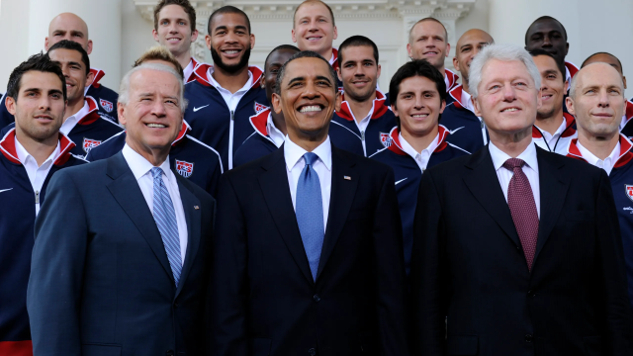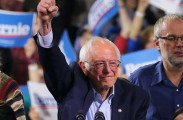
In This Article:
- How did FDR’s populist rhetoric define the Democratic Party?
- What led to the Democrats’ shift toward neoliberalism?
- Why did Clinton and Obama’s compromises alienate working-class voters?
- How did progressives revive FDR’s moral fight?
- What lessons must Democrats embrace to counter Trump’s resurgence?
What Democratic Party Failures Paved the Way for Trump’s Rise
by Robert Jennings, InnerSelf.com
In the shadow of the Capitol, Donald Trump’s return to political prominence loomed like a storm cloud over America. His resurgence wasn’t just about him; it symbolized a larger failure within the Democratic Party—a failure to confront the forces of inequality and authoritarian populism that had festered for decades. Despite multiple crises and growing inequalities, Democrats—except for a handful of progressives—had neglected to wield the rhetorical and moral clarity that once defined Franklin Delano Roosevelt’s presidency.
Roosevelt, faced with the depths of the Great Depression, didn’t shy away from calling out the entrenched power of the wealthy elite. His fierce denunciation of “Economic Royalists” and his unapologetic defense of the working class were as much a part of his success as his transformative policies. Yet, for much of the post-Reagan era, Democrats abandoned this legacy, stepping away from bold rhetoric and bold ideas. The result was a series of compromises that created the perfect storm for Trump’s rise. Understanding this story means tracing the slippery slope of political decisions that began in the 1970s and culminated in a populist backlash that Democrats failed to counter.
FDR’s Rallying Cry
When Franklin Delano Roosevelt took office in 1933, he inherited an economy in ruins. The Great Depression had left millions unemployed, and faith in government was at an all-time low. But Roosevelt understood that solving the crisis required more than policy; it required a story—a unifying narrative that framed his agenda as a moral fight for the soul of the nation. His attacks on “Economic Royalists” weren’t just rhetorical flourishes; they were strategic and resonated deeply with a population battered by greed and corruption at the top.
FDR’s New Deal policies, from Social Security to labor protections, transformed American society. But they were underpinned by his ability to speak directly to the people, using the language of fairness, justice, and accountability. Roosevelt’s rhetoric framed his administration as the champion of ordinary Americans, creating a legacy that would define the Democratic Party for generations.
The Shift to Neoliberalism
By the 1970s, the world Roosevelt built began to unravel. Neoliberalism—an economic philosophy emphasizing deregulation, privatization, and free markets—was gaining traction. The corporate blueprint for this transformation was laid out in the Powell Memo of 1971, which urged businesses to exert greater influence over politics, academia, and public discourse. This marked the beginning of a shift that would reshape the Democratic Party’s relationship with power.
While Republicans under Ronald Reagan embraced neoliberalism wholeheartedly, Democrats struggled to respond. By the time Bill Clinton was elected in 1992, the Democratic Party had largely abandoned its New Deal roots in favor of centrist pragmatism. Clinton’s presidency was a turning point, as the party adopted policies that prioritized market stability and corporate interests over working-class concerns.
Clinton and the Bond Market Mirage
Clinton entered office with ambitious promises: universal healthcare, middle-class tax cuts, and expansive investments in infrastructure. But these proposals clashed with the neoliberal orthodoxy that dominated Washington. Advisors like Treasury Secretary Robert Rubin and Federal Reserve Chairman Alan Greenspan warned that expansive government spending would spook the bond market, potentially destabilizing the economy. Clinton, fearing economic backlash, pivoted toward deficit reduction and fiscal conservatism.
His administration’s embrace of NAFTA signaled a commitment to free trade, but it devastated manufacturing communities across the country. Welfare reform, hailed as a modernizing measure, slashed federal aid and deepened poverty for many. The repeal of the Glass-Steagall Act deregulated financial markets, sowing the seeds for the 2008 financial crisis. While these policies were framed as pragmatic compromises, they alienated working-class voters and widened economic inequality.
Obama’s Pragmatism and Missed Opportunities
When Barack Obama entered the White House in 2009, he faced a crisis reminiscent of FDR’s era. The Great Recession had left the economy in shambles, and millions of Americans were desperate for relief. But while Obama enacted significant policies, like the Affordable Care Act and the American Recovery and Reinvestment Act, his approach lacked the moral clarity and populist energy of FDR’s leadership.
Obama’s stimulus plan saved jobs and prevented further economic collapse, but its benefits were undersold to the public. His administration’s decision to bail out Wall Street without addressing the root causes of the crisis reinforced the perception that Democrats were more concerned with protecting elites than helping ordinary Americans. The Affordable Care Act expanded healthcare access but preserved the dominance of private insurers, avoiding structural reform. By failing to use the bully pulpit to frame these efforts as part of a larger moral struggle, Obama left a void that populists like Trump would later exploit.
Progressives Revive the Fight
In the years following Obama’s presidency, progressive leaders like Bernie Sanders, Elizabeth Warren, and Alexandria Ocasio-Cortez began to reclaim the rhetoric of FDR. Sanders’s 2016 and 2020 campaigns called for a political revolution, centering policies like Medicare for All, a Green New Deal, and wealth taxes as moral imperatives. Elizabeth Warren’s critiques of corporate greed and AOC’s unapologetic defense of working people brought fresh energy to the Democratic Party.
These progressives understood that addressing inequality required more than policy proposals. It required naming the enemies of progress—billionaires, monopolies, and the rigged system that protected them. Yet, their efforts faced resistance from within the Democratic establishment, which often dismissed their ideas as too radical. This divide weakened the party’s ability to mount a unified challenge to Trump’s faux-populism.
Trump Fills the Void
Donald Trump capitalized on the frustrations of working-class Americans who felt abandoned by both parties. His message—though simplistic and often dishonest—resonated because it tapped into real anger. He framed himself as an outsider willing to challenge the establishment, offering a narrative of rebellion against elites. While his policies ultimately benefited the wealthy, his rhetoric convinced many that he was on their side.
Trump’s rise highlighted the cost of the Democrats’ rhetorical retreat. Without the moral clarity of FDR or the populist energy of progressives, the party struggled to inspire trust or offer a compelling alternative. In the vacuum they left, Trump’s divisive message flourished.
The Crossroads of Democracy
Today, America stands at a crossroads. The return of Trump is not just a political crisis but a symptom of decades of Democratic complacency. To rebuild trust and secure democracy’s future, the party must reclaim its populist roots. This means more than adopting progressive policies; it requires a rhetorical shift that frames the fight against inequality as a moral battle for justice and fairness.
Democrats must challenge corporate power, empower labor, and articulate a vision that resonates with the struggles of everyday Americans. The stakes are too high to settle for technocratic solutions or half-measures. FDR understood that leadership is as much about narrative as it is about policy. If Democrats fail to embrace this lesson, they risk ceding the future to forces that threaten the very fabric of democracy.
About the Author
 Robert Jennings is the co-publisher of InnerSelf.com, a platform dedicated to empowering individuals and fostering a more connected, equitable world. A veteran of the U.S. Marine Corps and the U.S. Army, Robert draws on his diverse life experiences, from working in real estate and construction to building InnerSelf with his wife, Marie T. Russell, to bring a practical, grounded perspective to life’s challenges. Founded in 1996, InnerSelf.com shares insights to help people make informed, meaningful choices for themselves and the planet. More than 30 years later, InnerSelf continues to inspire clarity and empowerment.
Robert Jennings is the co-publisher of InnerSelf.com, a platform dedicated to empowering individuals and fostering a more connected, equitable world. A veteran of the U.S. Marine Corps and the U.S. Army, Robert draws on his diverse life experiences, from working in real estate and construction to building InnerSelf with his wife, Marie T. Russell, to bring a practical, grounded perspective to life’s challenges. Founded in 1996, InnerSelf.com shares insights to help people make informed, meaningful choices for themselves and the planet. More than 30 years later, InnerSelf continues to inspire clarity and empowerment.
Creative Commons 4.0
This article is licensed under a Creative Commons Attribution-Share Alike 4.0 License. Attribute the author Robert Jennings, InnerSelf.com. Link back to the article This article originally appeared on InnerSelf.com
Article Recap
The article explores the Democratic Party’s drift from FDR’s populist vision, shaped by the Powell Memo, Clinton’s neoliberal compromises, and Obama’s technocratic approach. It highlights how these failures left a void exploited by Trump’s divisive rhetoric. Progressives like Bernie Sanders offer hope, but Democrats must reclaim FDR’s bold narrative to inspire trust and challenge inequality. The stakes—securing democracy—are too high for half-measures.
#DemocraticFailures #FDRLegacy #ProgressivePolitics #RiseOfTrump #Inequality #Populism #Neoliberalism #AmericanDemocracy








